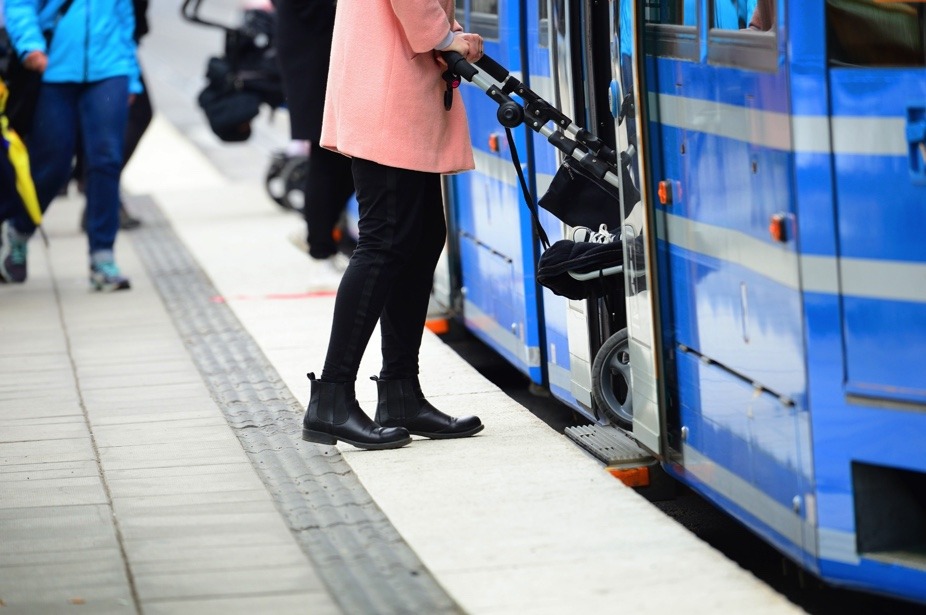In cities across the country, urban transport policies are putting parents at risk.
By Tracy Collins Ortlieb Updated September 13, 2019
In January of this year, Malaysia Goodson died descending a flight of stairs in a Midtown Manhattan subway station. Beside the 22-year-old, her 1-year-old daughter Rhylee—nestled in her stroller—was alive.
Police said Goodson had been trying to maneuver the stroller, with her baby daughter riding inside, down the stairs when she fell. Like many public transit stops in the New York City metro area, the subway station did not have an elevator.
The accident has drawn attention to a problem parents from New York to Los Angeles have fought for years to little avail: the nation’s public-transportation systems provide few accommodations for people who simply need to travel from Point A to Point B with a baby in a stroller.
Stroller Policies in the U.S.
In Atlanta, the MARTA system requires parents to fold a stroller before boarding a bus or train. Atlanta mother Avril Duschesne says removing her 10-month-old daughter from her stroller to fold it before boarding a MARTA bus is difficult and frustrating, and compares her baby in a stroller to a disabled person in a wheelchair.
“Even in rush-hour traffic, buses will stop and find room for a wheelchair,” Duschesne said. “So I don’t see why my child, who takes less space, is not allowed that.”
“Being able to move around the city like this is life-changing for parents.”
The policy is the same in Houston, where Metro buses require that a child be removed from a stroller before boarding and “the stroller must be collapsed, folded and placed out of the walkway of the bus.” In Boston, parents and caregivers face similar challenges in folding strollers before boarding while also monitoring the safety of children and the space and comfort of fellow passengers.
In Washington, D.C., a recent petition drive to allow open strollers resulted in a statement to from Metro that it was not considering a change. The agency told Fox 5 that unfolded strollers would “block the aisle, posing a safety/tripping hazard and delaying the boarding/alighting process.”
Stroller Safety
In New York City, the Seventh Avenue station in which Malaysia Goodson died lacks an elevator—as do roughly three-quarters of the MTA’s nearly 500 subway stations. Subway elevators that do exist are often cramped or inconveniently located, further discouraging use.
In Chicago, the handful of CTA’s 145 stations boasting any elevator (let alone a functional one) adds to the stress of parents forced to lug strollers, gear and children up and down flights of stairs to the train and then close their stroller to board the train. But in a turnaround decision last year, the city loosened its restrictions on open strollers trains and buses during non-peak hours.
- RELATED: The ABCs of Being Green
“We receive a lot of complaints from people concerned about open strollers and space on buses,” CTA spokeswoman Tammy Chase told Time Out. “We have to adhere to federal laws concerning seniors and people with disabilities, but we certainly understand it’s not easy (for parents).”
Chase notes the solution to transit travel with strollers safer for all passengers is a complicated one. “There’s only so much space. We can’t make the trains wider, we can’t make the buses wider. We try to accommodate as many passengers as we can,” she said. “There’s absolutely no ban on strollers, we’re not discouraging strollers. We’re just asking parents to use as small a stroller as possible because space is limited.”
But some cities have figured out ways to accommodate seniors, people with disabilities, and parents with strollers.
Stroller Solutions
In a 2011 report sponsored by the nonprofit Transit Cooperative Research Program, “Strollers, Carts, and Other Large Items on Buses and Trains: A Synthesis of Transit Practices,” researchers studying transit habits worldwide noted that, in particular, Scandinavian cities are especially stroller-friendly. Oslo removed poles in its trains to create space for twin strollers. In Copenhagen, trains have designated areas for carriages, and buses allow unfolded strollers—many of which are even larger than models popular in the United States.
Stockholm native Freja Larssen said that after years of living across the US, she was heartened by recent changes to San Francisco’s MUNI policies that allowed boarding with a baby to coincide with the birth of her first son, Liam. While in Stockholm parent and baby ride free, as of this year in San Francisco, you can take your baby, cozy in their stroller, on MUNI buses. In fact, there’s now a designated spot for them.
“I’d seen a lot of restrictive policies in different cities around the US when it came to strollers, so it’s fantastic that San Francisco now allows a stroller to board on the lift, and that I can leave him in the stroller without waking him,” Larssen said. “Being able to move around the city like this is life-changing for parents.”
- By Tracy Collins Ortlieb
Published in Parents




